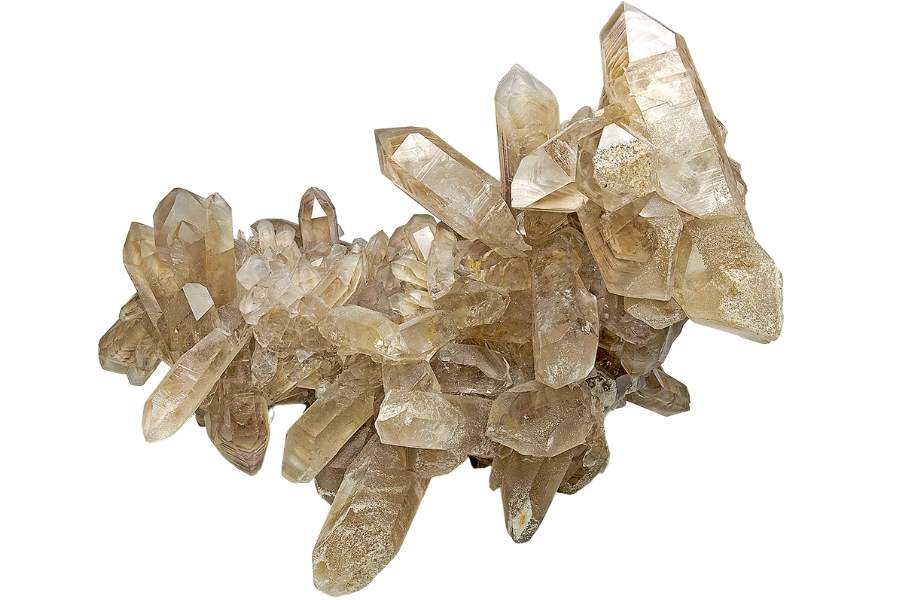Whether you’re thinking about buying quartz, already own some, or just want to know more about it, this article is for you. This gemstone comes in various colors and forms, making it a favorite in jewelry and home decor.
But with its popularity comes a challenge: there are many other crystals and gemstones that are often mistaken for it. Worse, fake ones are everywhere. You might wonder, “How can I tell if my quartz is real?” It’s a great question, and the answer is not always straightforward.
By the end of this article, you’ll have the knowledge of how to identify quartz and how to tell real vs fake quartz, even if you’re not a gem expert. We’ll share useful tips and tricks that will help you ensure that you’re investing in nothing but a real one.
Overview Of Natural Quartz And Why Fakes Are Common

Quartz is one of the most common and varied minerals. It forms deep in the Earth’s crust under high pressure and temperature. Over millions of years, it grows from a mixture of melted rocks and mineral solutions.
On the Mohs Scale of Hardness, where 1 is very soft and 10 is the hardest, quartz scores a 7. This means it can scratch glass and metal easily. This crystal is also unique because it can come in many different colors: clear, purple (amethyst), pink (rose quartz), yellow, or even black.
Ancient people made tools and weapons from quartz because it’s so hard and sharp. Today, the value of quartz is still heavily influenced by its many uses. It’s not only popular in jewelry; it’s also used in watches and clocks. When electricity passes through it, it vibrates at a steady rate, which helps to keep time.
In buildings, quartz is also used to make countertops and tiles because it’s hard and doesn’t scratch easily. In the technology world, it’s used in computer chips and electronic devices for its ability to carry electrical signals.
Why you’re seeing more fake quartz these days
In recent years, there’s been a big increase in fake quartz showing up in stores and online. There are a few reasons why this is happening.
First, it’s really popular because it’s beautiful and has many uses. Because so many people want it, some sellers try to make more money by selling fake quartz that’s cheaper to make.
It also doesn’t help that making fake quartz is pretty easy. Some are just glass or plastic that’s been shaped and colored to look like real quartz.
Since it comes in so many colors and forms, it’s not too hard to make something that looks quite similar. These fakes can be very convincing, especially to someone who isn’t an expert.
Another reason for more fakes is the rise of online shopping. Buying things online is super convenient, but it’s harder to check if something is real when you can’t see it or touch it in person. Pictures can be misleading, and it’s easier for sellers to hide the fact that their specimen is fake.
How To Identify Real Quartz
The first step to avoid being duped with fake quartz is to learn how to identify your rocks. Here are some helpful and practical tips you can do:
Look at the clarity and check for imperfections
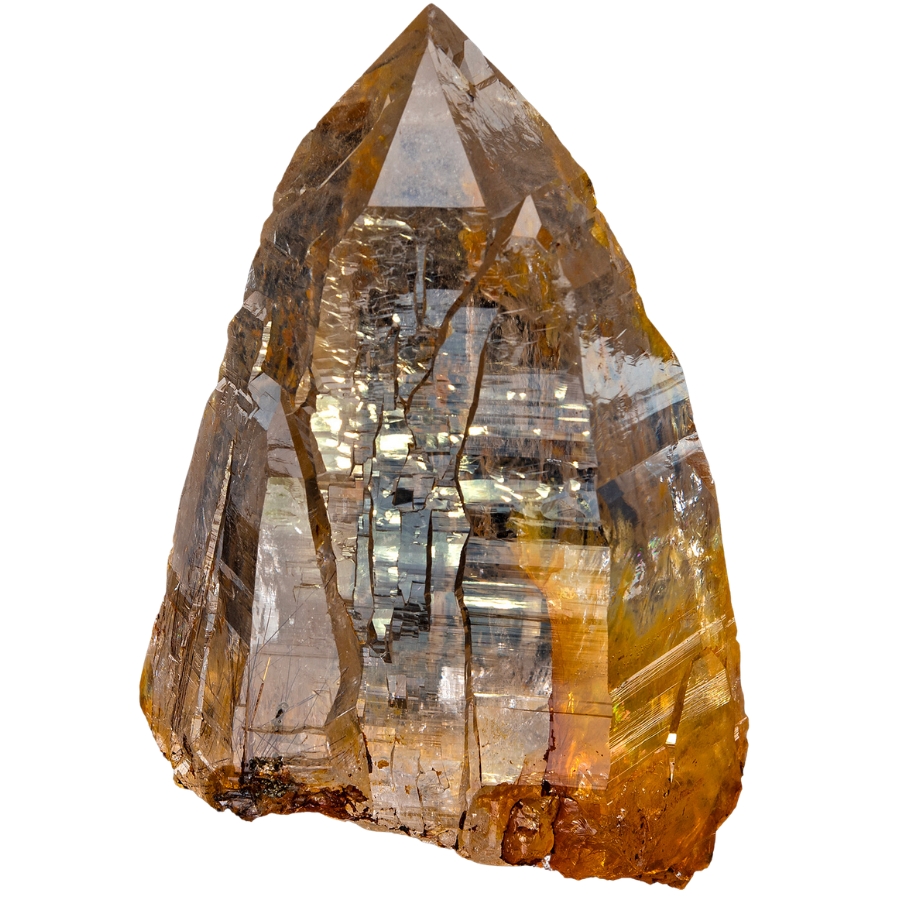
Real quartz can be clear or cloudy, but it should look natural. Sometimes, fake ones made of glass will have air bubbles inside. If you see these tiny bubbles, it’s probably not the real deal.
Also, real quartz often has small imperfections, like tiny cracks or pieces of other minerals inside it. These imperfections show that they formed in nature, not in a factory.
If the mineral looks too perfect, with no flaws or marks, it might be man-made. Remember, nature isn’t perfect, so real ones will have some natural quirks and features that make them unique.
Feel its temperature

Feeling the temperature of a specimen is also a simple but effective way to check if it’s real. Real quartz has a cool touch, especially when you first hold it. This coolness is because it doesn’t hold onto heat very well.
So, when you pick up a piece of this mineral, it should feel cooler than the surrounding air, at least for a little while.
On the other hand, fake quartz made of materials like glass or plastic tends to warm up more quickly to your hand’s temperature. If the stone quickly feels warm like the rest of the room, it might not be real.
Do a hardness test
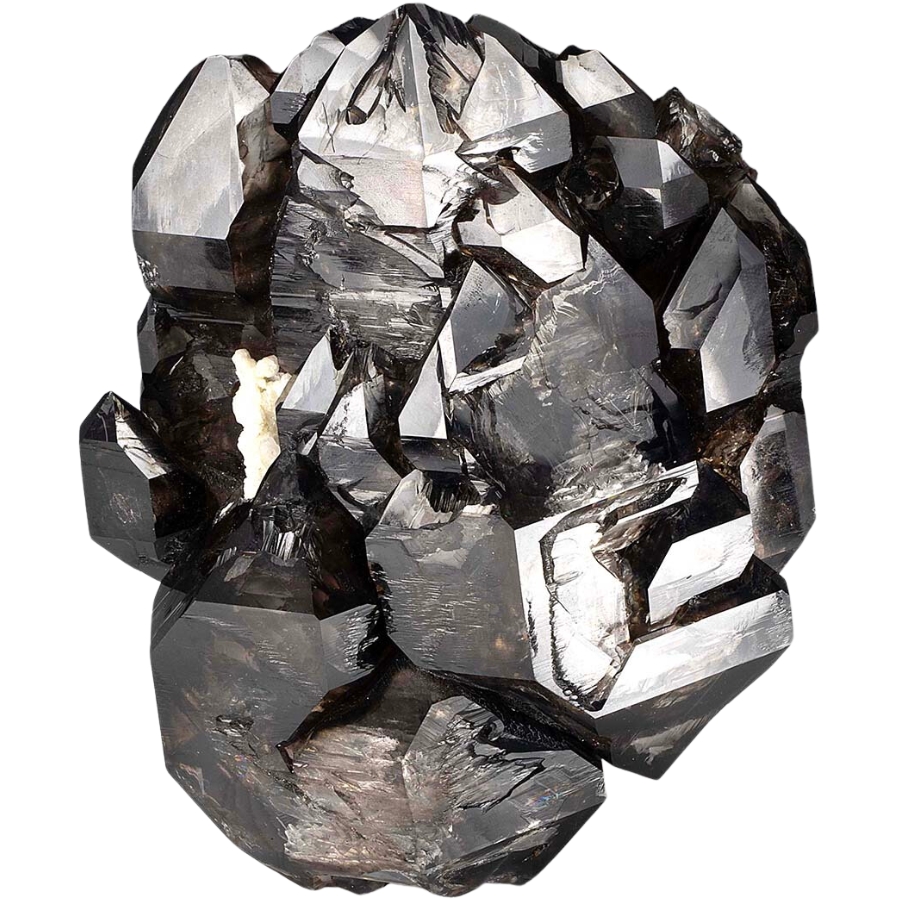
A hardness test is another great way to check a mineral’s authenticity. A real quartz can scratch materials like glass or even metal.
To do a hardness test, you can try to scratch a piece of glass or a kitchen tile with your quartz. If it leaves a scratch, it’s a good sign that your specimen is real. Be careful not to scratch yourself in the process or ruin your entire specimen.
If the quartz doesn’t scratch the glass or tile, it might not be genuine, because a real one should be stronger and can scratch these softer materials.
Inspect the edges and surface
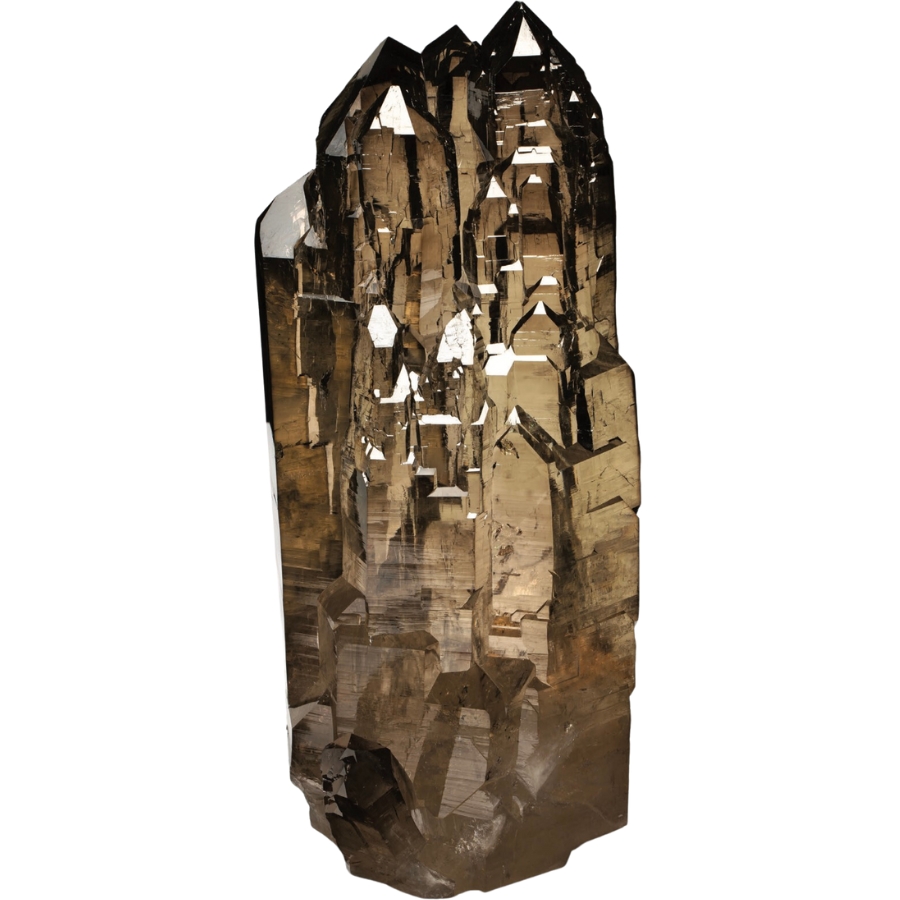
Real quartz usually has sharp, well-defined edges and a surface that might be a bit rough or uneven, so if your specimen has these characteristics, it’s a good sign that it’s real.
On the other hand, fake quartz, which is often made in factories, tends to have edges that are too perfect or look the same all around. The surface might be too smooth and even, without any natural roughness or unevenness.
The Different Types Of Fake Quartz And What They Look Like
Knowing where to find quartz will definitely help save you from falsely acquiring a fake one. But another way to avoid fake ones is to actually familiarize yourself with the natural and man-made rocks that are often sold as real quartz, such as:
Glass and Plastic Imitations

Glass and plastic are made to look like real quartz, but they’re very different in how they’re formed and used.
Glass imitations are made by melting sand, soda ash, and limestone at high temperatures. Once melted, it can be shaped into crystals that look like quartz. They can even add colors to make it look like different types of this mineral, like amethyst or rose quartz.
But, even though they can look pretty close, the difference between glass and quartz is that the latter is smoother and usually has tiny air bubbles inside, which the former doesn’t have.
As for plastic imitations, they’re made from various types of plastic materials that are melted and poured into molds that are shaped like quartz crystals. Just like glass, plastic can also be colored to mimic different types of this mineral.
Plastic imitations are lighter than real quartz and feel warmer to the touch. They also don’t have the natural imperfections and cool feel that real ones have.
How you can identify glass and plastic imitations being sold as real quartz
Check for air bubbles
If you look closely at a crystal being sold as quartz and see tiny air bubbles inside, it’s likely not real. These bubbles are a common sign of glass, as real quartz doesn’t have them.
Feel the weight and temperature
Real quartz is heavier and feels cooler to the touch compared to glass or plastic. If the crystal feels light for its size or quickly warms up in your hand, it might be glass or plastic.
Do a scratch test
Quartz is hard and can scratch glass without being scratched itself. If you can easily scratch the crystal with something like a piece of metal, or if it gets scratched by glass, it’s probably glass or plastic, not real quartz.
Calcite
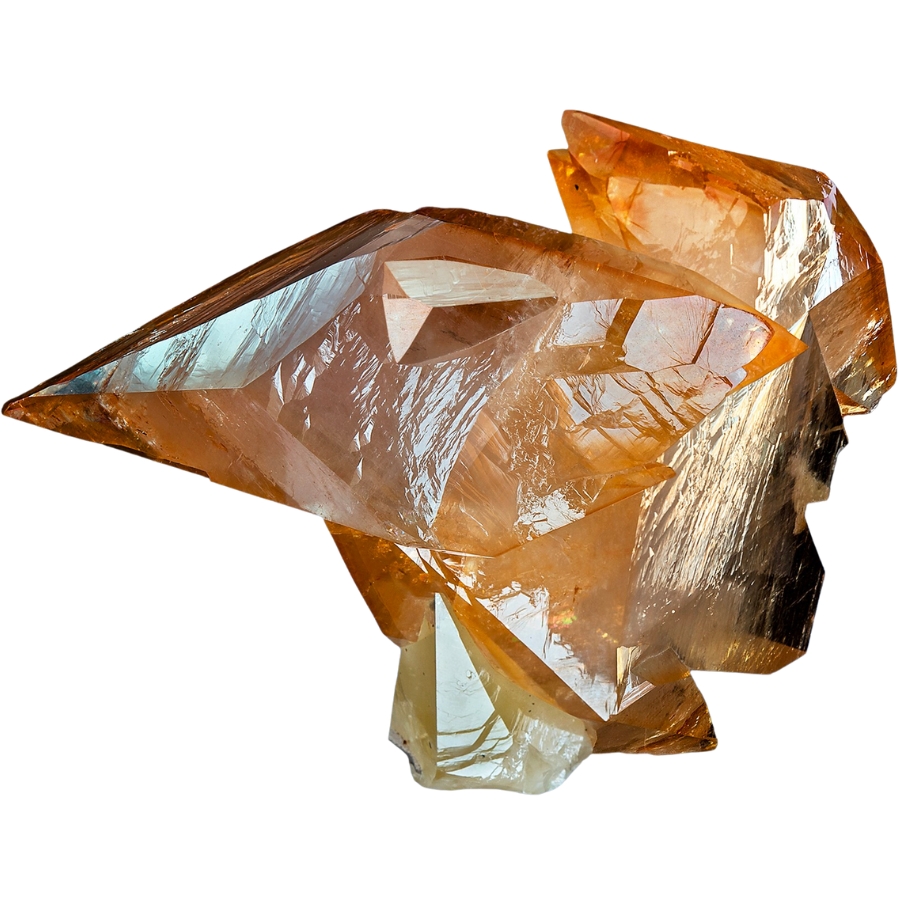
Calcite is a common mineral that’s formed in shallow marine settings, like seas and lakes, where there are lots of living organisms. These organisms use calcium carbonate, which is in the water, to make their shells.
When these organisms die, their shells break down, and the calcium carbonate gets deposited on the sea or lake floor. Over time, layers of these deposits build-up, and with the help of pressure and a bit of heat, they turn into calcite.
This mineral can be found in many different shapes and colors, some of which can look a bit like quartz.
In comparing calcite vs quartz, you’ll see that the latter is easier to cut and shape. So, people shape calcite to make it look like quartz. They might even treat it or coat it with shiny materials.
How you can identify calcite being sold as real quartz
Check for acid reaction
Calcite reacts with common acids like vinegar. If you put a few drops of vinegar on the crystal and it fizzes or bubbles, it’s a sign that it’s calcite because quartz doesn’t react to vinegar.
Look at the crystal shape
Calcite often forms in different shapes compared to quartz. It can have more flat surfaces and fewer sharp points. If the crystal’s shape looks more blocky or flat, it might be calcite.
Test its hardness
Calcite is softer than quartz, so you can try scratching it with a metal object like a coin. If the coin leaves a mark or scratch, it’s probably calcite.
Fluorite
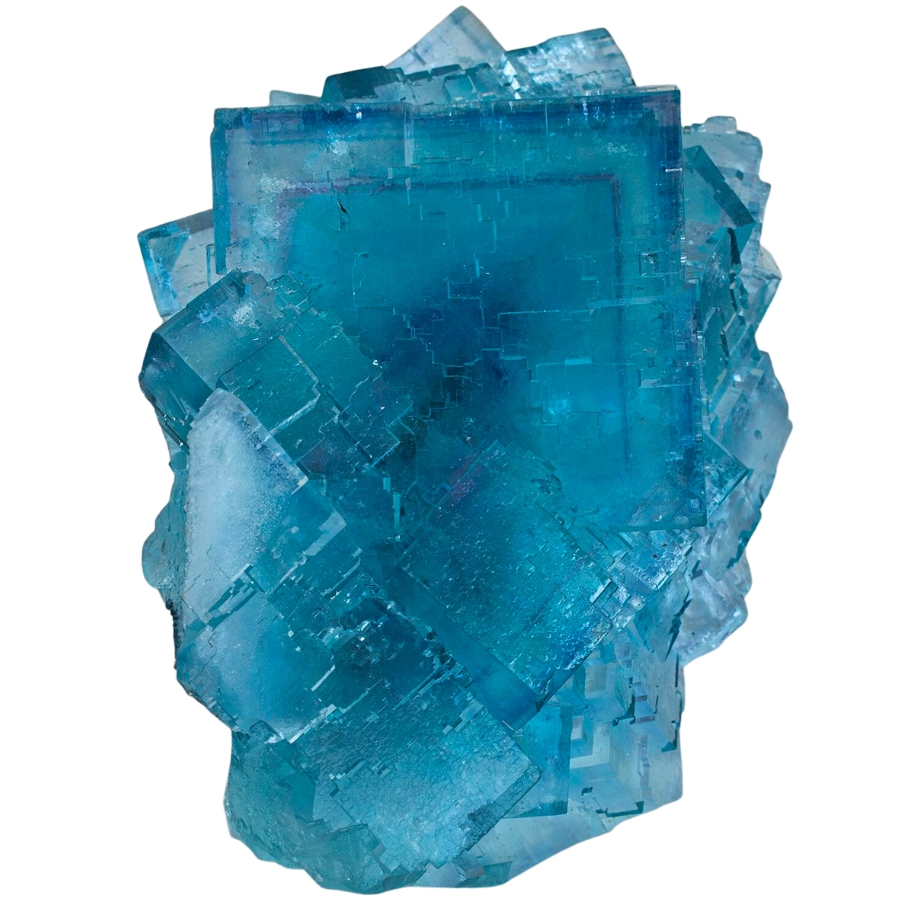
Fluorite is another colorful mineral that sometimes gets passed off as quartz. It usually grows in places where hot water flows through rocks deep underground. This hot water has lots of different chemicals in it.
As the water moves through the rocks, it starts to cool down. This cooling causes the chemicals in the water to stick together and form crystals, and that’s how fluorite is born. This mineral can have different colors, just like quartz.
Since fluorite can be clear or have pretty colors, it can trick people who don’t know a lot about minerals. It’s softer than quartz, so it can be polished to look shiny and beautiful, just like it.
How you can identify fluorite being sold as real quartz
Observe the colors
Fluorite can come in really bright colors like deep purples, greens, or blues, often more vibrant than quartz. If the crystal has very bright colors or color bands, it could be a sign it’s fluorite.
Examine its crystal shape
Fluorite often forms in shapes like cubes or octahedrons, which are different from quartz’s usual pointy crystal shapes. If the crystal has more square or blocky shapes, it might be fluorite.
Feel it weight
Fluorite is generally heavier than quartz, so if you have a crystal that feels unusually heavy for its size, there’s a good chance it’s fluorite.
Gypsum
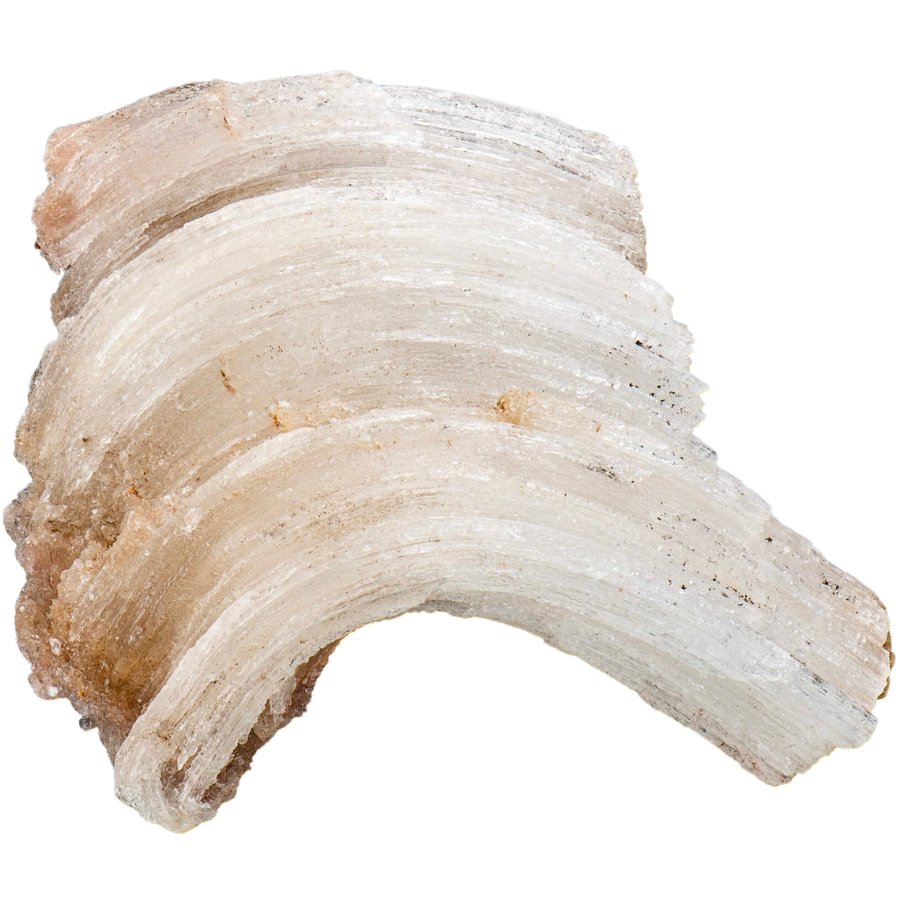
Gypsum comes from evaporating water, usually in places like saltwater lakes, sea beds, or hot springs. When water evaporates, it leaves behind minerals, and in the case of gypsum, it’s formed from the leftovers of calcium and sulfate.
Over time, these leftover minerals turn into gypsum crystals. Gypsum can be clear and look a bit like quartz, but it can also be white, gray, or even have a slight color to it.
People sometimes use gypsum to make fake quartz because it can look similar and is much softer, making it easier to shape and polish. When it’s used to imitate quartz, it’s often shaped and polished to look like its crystals.
How you can identify gypsum being sold as real quartz
Look for a shiny surface
Quartz is known for being shiny and polished. Gypsum doesn’t get as shiny, even when it’s polished, so if the crystal looks duller, it might be gypsum.
Observe its crystal shape
Gypsum forms in different shapes compared to quartz. It often has more elongated, fibrous, or flat shapes, unlike the pointed, six-sided crystals of quartz.
Do a scratch test
Gypsum is much softer than quartz. You can actually scratch it with just your fingernail, while the real deal is too hard for that.
Topaz
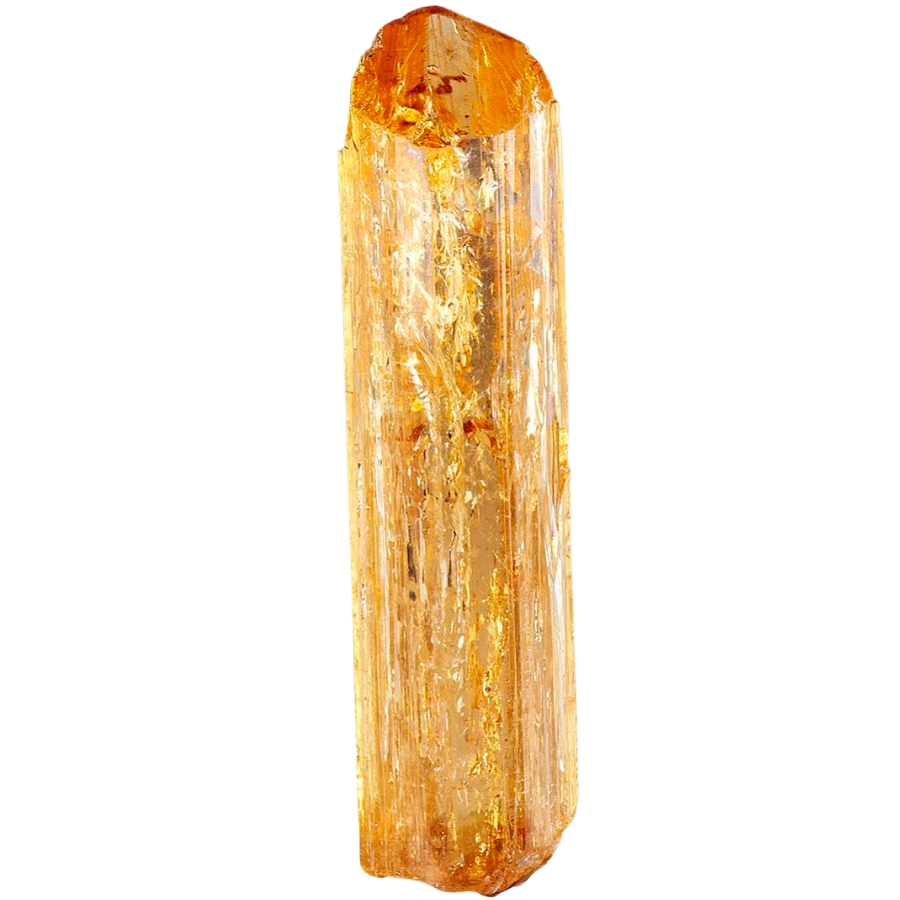
Topaz is made when a special mix of elements, like fluorine and aluminum, get together in hot, watery solutions deep in the Earth. These elements are found in rocks that have been changed by heat and pressure over a really long time.
When these hot solutions start to cool down, topaz crystals begin to grow. This process can take thousands of years.
Topaz can be all sorts of colors, from clear to yellow, blue, pink, and even red. This wide range of colors is one reason why people might mistake it for quartz. But topaz is actually more valuable and harder.
When topaz is used to be sold as quartz, it’s usually because the sellers think people won’t know the difference. They might take a less expensive, less colorful piece of topaz, polish it up, and sell it as quartz, which is more well-known.
How you can identify topaz being sold as real quartz
Examine the color
While both topaz and quartz can come in many colors, the latter often has a more consistent color throughout. If the crystal has a deep, evenly colored appearance, it might be topaz.
Notice the crystal shape
Topaz usually forms in long, slender crystals, unlike the more common six-sided, pointy shape of quartz crystals. If the crystal looks more elongated and less pointy, it could be topaz.
Do a simple hardness test
Topaz is harder than quartz. This means if you have a piece of topaz, it shouldn’t get scratched by objects that would scratch quartz, like a steel file.
How To Tell If Quartz Is Real Vs Fake
Now that you’re familiar with some of the usual rocks that are manipulated to look like real quartz, we’ll give you more tips so that you don’t go buying fake specimens for the price of a real one.
How to identify fake quartz when it’s cut or polished
When it comes to cut or polished crystals, below are the different characteristics of fake quartz that you should be wary of:
Easily scratched
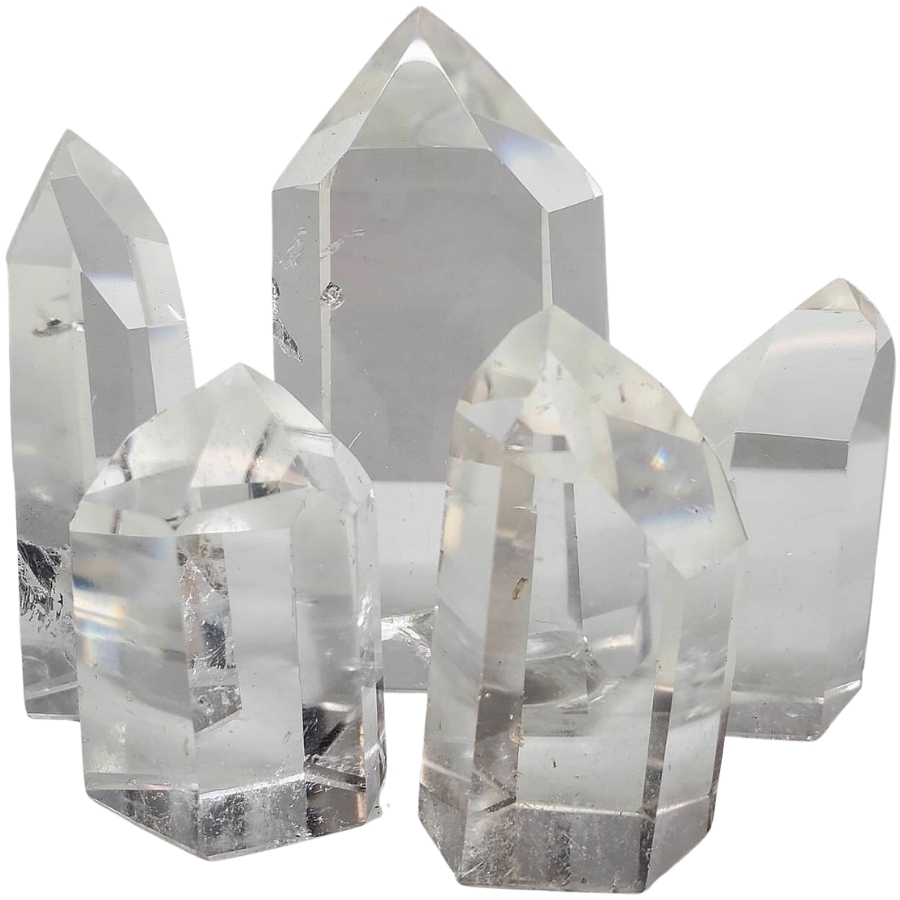
When you’re trying to figure out if a cut and polished stone is real quartz or a fake, one good test is to see how easily it gets scratched. Real quartz is pretty tough, so it’s hard enough to scratch glass and most metals.
So, if you have a stone that’s supposed to be quartz, you can try scratching it with something like a steel file or even a piece of glass. If it’s real, these things shouldn’t leave a mark.
But if it’s fake, like one made of glass or plastic, it will probably get scratched by these items. Glass, for instance, is softer than quartz. It rates about 5.5 on the Mohs scale, so it’s easier to scratch.
Uniform and even color
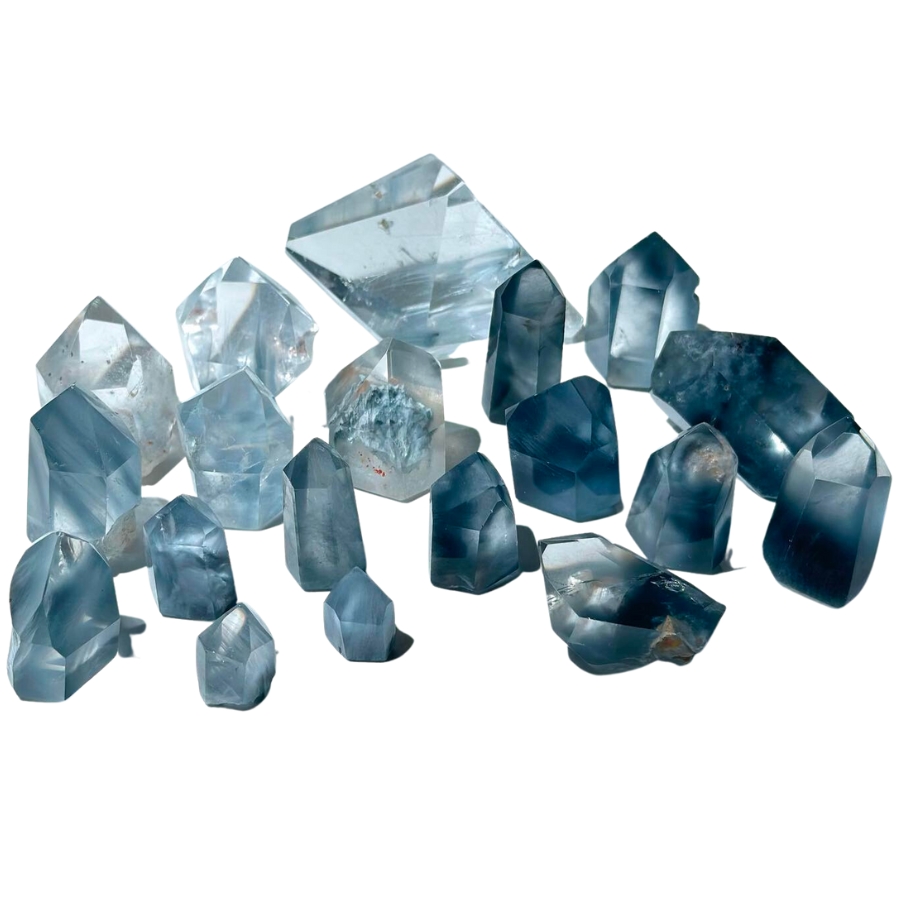
Real quartz is made by nature, and nature isn’t perfect. This means that the colors in natural ones usually aren’t the same all over. You might see different shades, or the color might be darker in some places and lighter in others.
This unevenness is a sign of real quartz because it shows the stone formed naturally over time.
But if you see a piece of quartz and the color looks super even and uniform, like it’s the exact same all over, that’s a clue it might be fake.
Fake ones are often made in factories where they can control how they look. They might dye it to make it a certain color. When they do this, they can make the color look really even and perfect, which isn’t how real quartz usually looks.
Warms up quickly
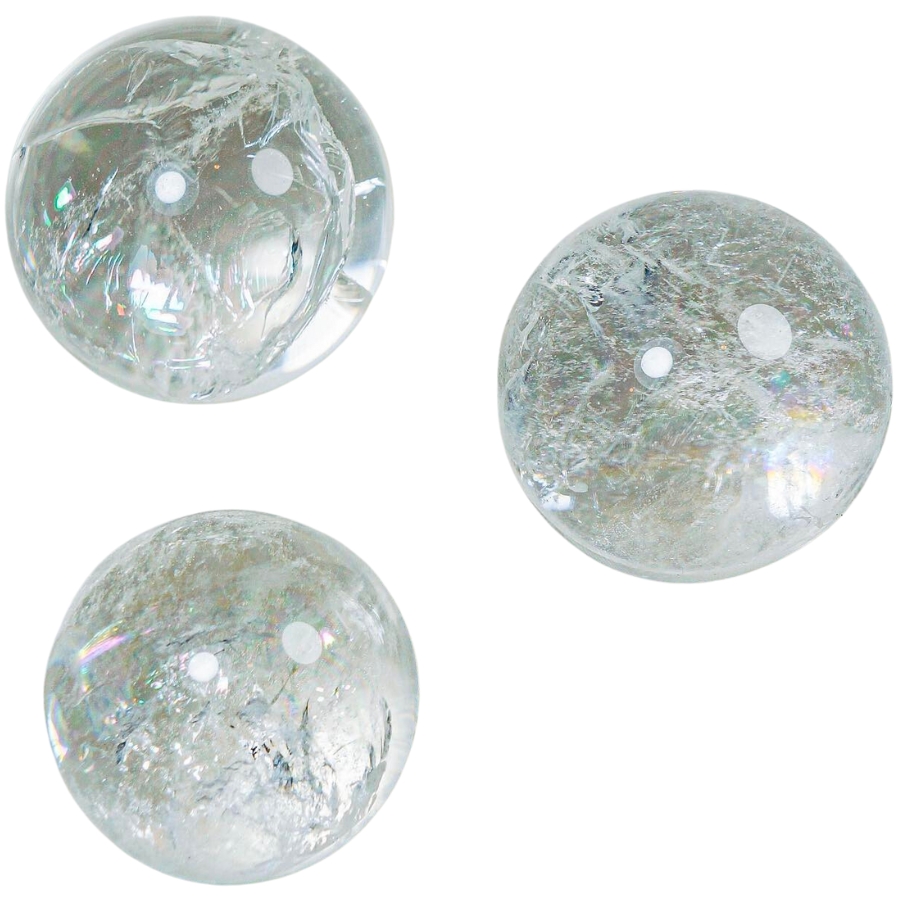
Another thing you can do is check how quickly the crystal warms up. Real quartz has a cool trick: it stays cool for a while when you hold it. This is because it doesn’t absorb heat very fast.
So, when you pick up a real quartz stone, it should feel cool in your hand at first, even if the room is warm.
But if the stone is fake quartz, it will warm up pretty quickly when you hold it. Glass and plastic are not good at staying cool. They absorb the heat from your hand faster. This means they’ll start feeling warm pretty soon after you pick them up.
So, try this out: hold the stone in your hand for a bit. If it feels cool for a while, it’s more likely to be real quartz. But if it gets warm quickly, like in a minute or two, it could be a sign that it’s a fake made from something else.
How to identify fake quartz when it’s raw
Determining whether a quartz is a mere lookalike or a genuine one can be a bit easier when it’s in its raw form. Below are some of a fake quartz’s characteristics:
Air bubbles
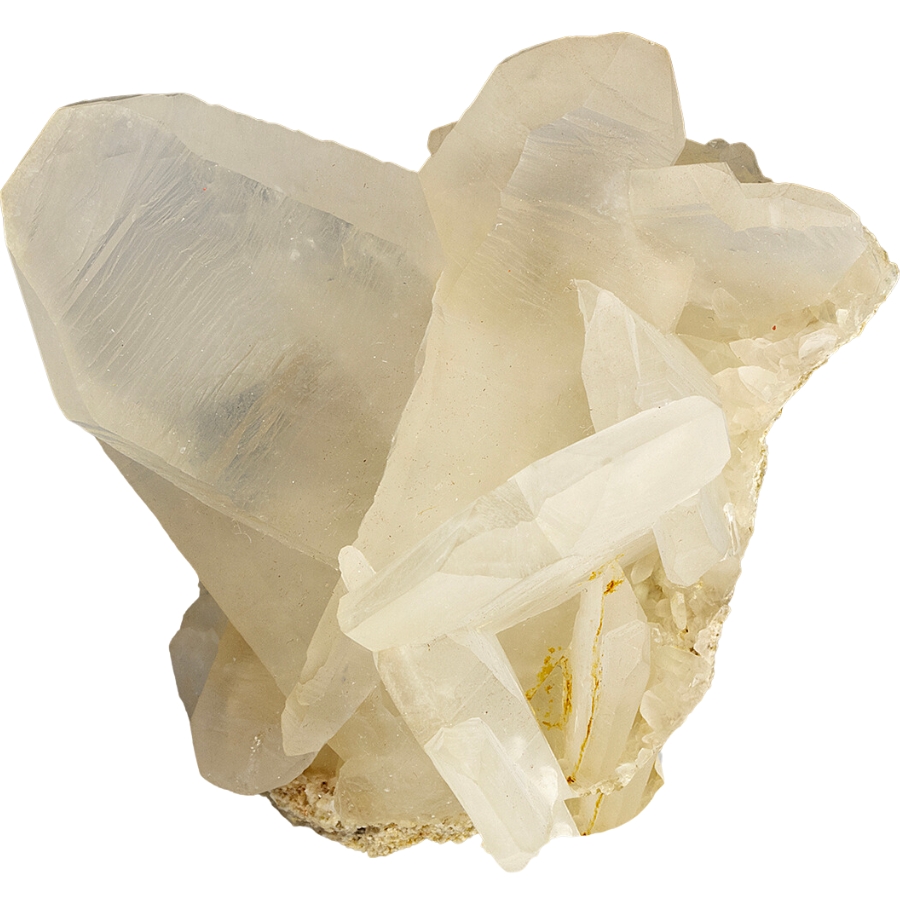
Air bubbles can be a big clue when you’re trying to figure out if a piece of raw and uncut quartz is real or fake. This mineral forms over a really long time from melted rock and minerals, and this process doesn’t create air bubbles inside the quartz.
In contrast, fake quartz, especially the kind made of glass, often has tiny air bubbles in it. When glass is made, it’s melted and then cooled down to form a shape. During this process, air can get trapped inside, which makes these little bubbles.
If you’re looking at a piece of raw quartz and you see small bubbles inside it, it’s a good sign that it might not be real. Just take a close look. If you spot these bubbles, especially if there are a lot of them or they’re in a pattern, then it’s probably fake.
Smooth edges and surface
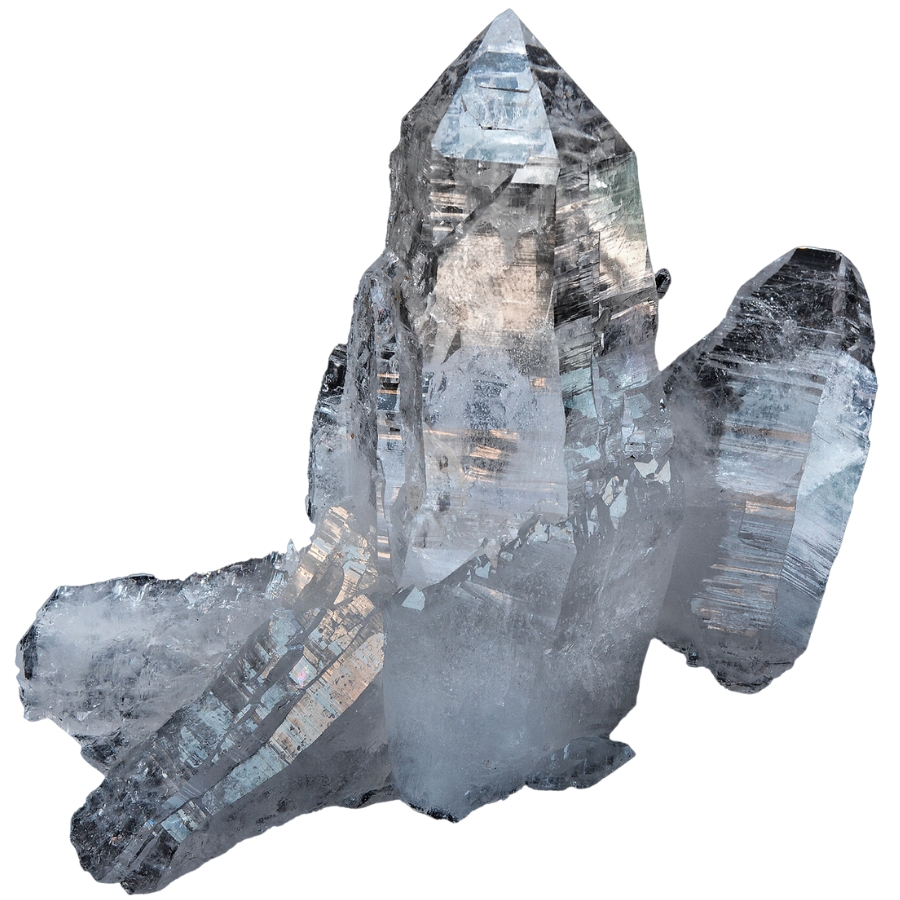
When you’re looking at raw and uncut quartz, the edges and surface can tell you a lot. Quartz usually has edges and surfaces that are a bit rough or irregular.
That’s because as it forms, it grows in unpredictable ways, creating unique shapes and textures. No two pieces of natural quartz are exactly the same, and they often have bumps, ridges, or other marks that show they were made by nature.
But fake quartz often has really smooth edges and surfaces. When making it, machines can shape it so that all the edges are even and the surfaces are super smooth.
So, if you find a piece of quartz and notice that its edges are really even and the surface is very smooth, it might be a sign that it’s not genuine.
No cracks or inclusions
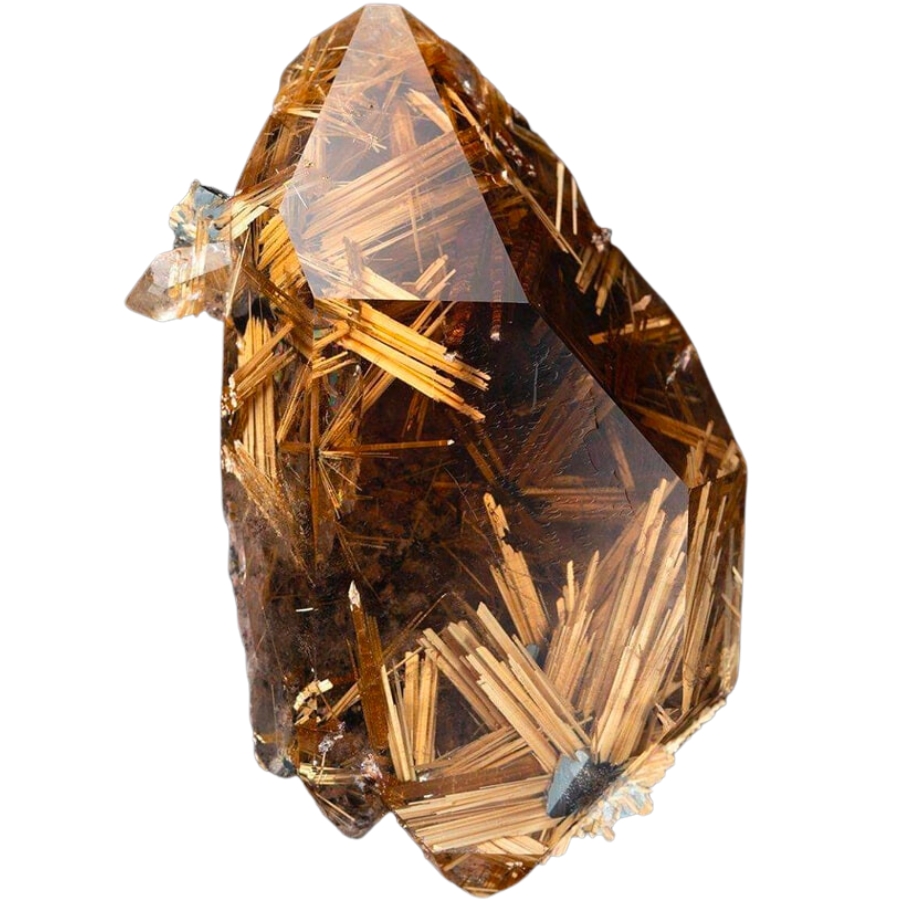
When you’re checking out raw and uncut quartz, seeing if it has any cracks or inclusions or little bits of other stuff inside can help you figure out if it’s real or fake.
Quartz often has tiny cracks or inclusions. These are like little fingerprints from nature. They happen because as it grows underground, it can run into other minerals or have little shifts and changes, which create these marks.
On the other hand, fake quartz often doesn’t have any of these little cracks or inclusions. That’s because when people make it, they try to make it look really clear and perfect. But this perfection is actually a giveaway that it’s not real.
If you look at a piece of quartz and it has absolutely no cracks, little lines, or bits of other minerals inside it, it might be a sign that it’s not the real deal.

